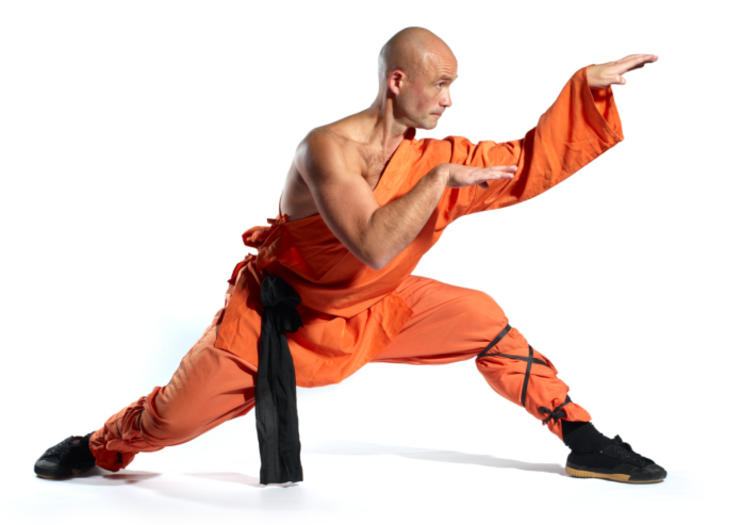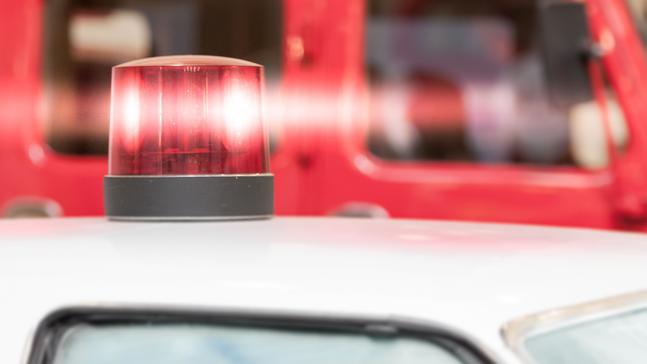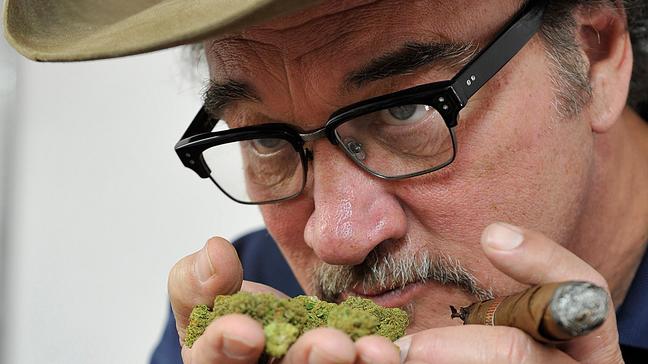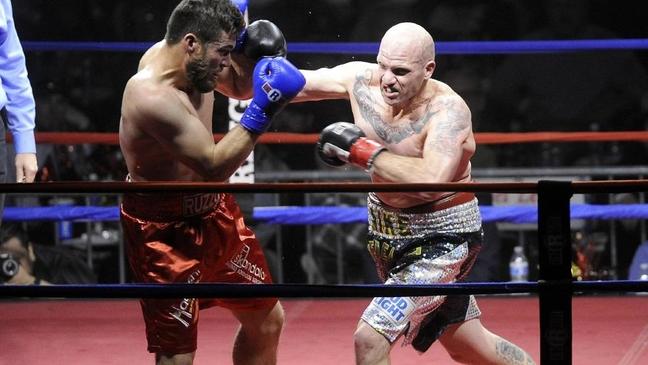Mind-body exercises employed by Chinese warriors millennia ago can poise modern people for the "battle of daily life."
"It's really about harnessing our own energy," says Laura Winslow while teaching qigong (CHEE'-gung) to students in Medford. "We're all made up of energy."
Translated in English as "energy exercise," qigong is an ancient philosophy that's gained popularity in recent decades with Western recognition of traditional Chinese medicine. While acupuncture, massage and other complementary therapies manipulate the "life force" known as "qi" (or "chi"), principles of qigong increasingly are applied to the contexts of exercise, meditation and relaxation.
"I just really believe in its healing and restorative powers," says Sheree Butsch, who has been taking weekly qigong classes, along with yoga, for the past year at Medford's Rasa Center for Yoga and Wellness.
A recent Rasa class begins with subtle modes of breathing and stretching before moving into several scripted series of movements guided by "healing sounds" and color imagery. Students finish the 45-minute session seated for a short meditation and visualization.
"It works with releasing emotional debris ... and I find that fascinating," says Winslow, who incorporates qigong into her Integrative Recovery Therapy program, used in Medford and Ashland for addiction treatment.
"It's really about harnessing our own energy," says Laura Winslow while teaching qigong (CHEE'-gung) to students in Medford. "We're all made up of energy."
Translated in English as "energy exercise," qigong is an ancient philosophy that's gained popularity in recent decades with Western recognition of traditional Chinese medicine. While acupuncture, massage and other complementary therapies manipulate the "life force" known as "qi" (or "chi"), principles of qigong increasingly are applied to the contexts of exercise, meditation and relaxation.
"I just really believe in its healing and restorative powers," says Sheree Butsch, who has been taking weekly qigong classes, along with yoga, for the past year at Medford's Rasa Center for Yoga and Wellness.
A recent Rasa class begins with subtle modes of breathing and stretching before moving into several scripted series of movements guided by "healing sounds" and color imagery. Students finish the 45-minute session seated for a short meditation and visualization.
"It works with releasing emotional debris ... and I find that fascinating," says Winslow, who incorporates qigong into her Integrative Recovery Therapy program, used in Medford and Ashland for addiction treatment.
According to Chinese teachings, negative emotions can be retained in the body's organs, compromising health. Qigong employs breath control and vocal frequencies to direct energy and clear the body's meridians so energy flows freely.
Acupuncture is another traditional Chinese discipline for manipulating qi.
"(Qigong) works by vibrating that particular organ of the body," says Winslow. "We're using breath and movement instead of needles to open up the meridians."
A number of Rogue Valley acupuncturists and practitioners of traditional Chinese medicine offer instruction in qigong. Adam Holtey, owner of Community Acupuncture and Natural Health in Central Point, combines yoga and qigong in his classes.
"There is a very fine line between yoga and qigong," says Holtey.
Acupuncture is another traditional Chinese discipline for manipulating qi.
"(Qigong) works by vibrating that particular organ of the body," says Winslow. "We're using breath and movement instead of needles to open up the meridians."
A number of Rogue Valley acupuncturists and practitioners of traditional Chinese medicine offer instruction in qigong. Adam Holtey, owner of Community Acupuncture and Natural Health in Central Point, combines yoga and qigong in his classes.
"There is a very fine line between yoga and qigong," says Holtey.
The two Eastern disciplines cover some common ground, particularly their emphasis on breathing, says Holtey. And like yoga, qigong has several branches, each with its own purpose, he says. Spiritual qigong, he explains, "cultivates virtues" after stagnant energy and emotions have been swept from the body. Certified in medical qigong, Holtey says he diagnoses and treats people for all manner of physical complaints, as well as depression and anxiety.
Psychotherapist and counselor Nando Raynolds also uses qigong in his alternative approach to healing. He made a 45-minute qigong DVD, titled "The Holistic Energy Workout," several years ago to sell to clients and students, and he advocates practicing qigong throughout the day in three- or five-minute bursts akin to "chair yoga."
"There are moving qigongs, and there are stationary qigongs," he says, adding that qigong can be applied to just about any area of one's life.
"Stretching is a qigong, and going jogging is a qigong, says Raynolds. "Singing is an energy exercise."
Holtey agrees: "Even affirmations are qigong practice."
But it's the iconic movements of tai chi and yoga that heighten qigong's visibility, says Raynolds, who teaches tai chi classes in Ashland. In tai chi, says Holtey, qigong goes from standing to walking. Both cite the well-known qigong series "Eight Pieces of Brocade," conceived by an Imperial Chinese military commander, as many practitioners' main routine.
Psychotherapist and counselor Nando Raynolds also uses qigong in his alternative approach to healing. He made a 45-minute qigong DVD, titled "The Holistic Energy Workout," several years ago to sell to clients and students, and he advocates practicing qigong throughout the day in three- or five-minute bursts akin to "chair yoga."
"There are moving qigongs, and there are stationary qigongs," he says, adding that qigong can be applied to just about any area of one's life.
"Stretching is a qigong, and going jogging is a qigong, says Raynolds. "Singing is an energy exercise."
Holtey agrees: "Even affirmations are qigong practice."
But it's the iconic movements of tai chi and yoga that heighten qigong's visibility, says Raynolds, who teaches tai chi classes in Ashland. In tai chi, says Holtey, qigong goes from standing to walking. Both cite the well-known qigong series "Eight Pieces of Brocade," conceived by an Imperial Chinese military commander, as many practitioners' main routine.
It starts with "propping up the sky" to regulate the "triple warmer," spaces in the body's abdominal cavity recognized as an organ in traditional Chinese medicine. Fingers interlaced and arms overhead, Winslow's students appear to hold a long stretch. According to qigong, the pose disperses stagnant energy and strengthens the back muscles.
Working the muscles, however, isn't the goal of qigong. Working with energy is.
"Imagine that you have a thread of silk attached to your finger," says Winslow, encouraging students to move slowly, steadily and purposefully through the class.
The smooth motions and sedate pace make qigong particularly appealing to older adults, who may suffer diminished balance, strength and stamina. With regular practice, physical abilities and overall vitality improve, say qigong instructors. While the demographic of many Rogue Valley qigong classes is middle-age or older, younger students benefit from slowing down a bit, says Clark Zimmerman, a licensed acupuncturist and Chinese medical practitioner in Talent who also teaches qigong.
And women derive specific health benefits in classes designed for their anatomy, says Deborah Davis, licensed acupuncturist and author of the 2008 book "Women's Qigong for Health and Longevity."
Working the muscles, however, isn't the goal of qigong. Working with energy is.
"Imagine that you have a thread of silk attached to your finger," says Winslow, encouraging students to move slowly, steadily and purposefully through the class.
The smooth motions and sedate pace make qigong particularly appealing to older adults, who may suffer diminished balance, strength and stamina. With regular practice, physical abilities and overall vitality improve, say qigong instructors. While the demographic of many Rogue Valley qigong classes is middle-age or older, younger students benefit from slowing down a bit, says Clark Zimmerman, a licensed acupuncturist and Chinese medical practitioner in Talent who also teaches qigong.
And women derive specific health benefits in classes designed for their anatomy, says Deborah Davis, licensed acupuncturist and author of the 2008 book "Women's Qigong for Health and Longevity."
"Our bodies are different than men," says Davis. "We actually have a different energy center that's lower ... called the 'uterine palace.' "
Most qigong classes, says Davis, are designed for a man's body, and most qigong books have a martial-arts focus. Her book, published by Shambhala Publications, addresses the common female conditions of premenstrual syndrome, menopause and osteoporosis, as well as depression, cancer, breast health, heart health and sexual vitality. Women can improve their health and heal common ailments associated with gender and aging through qigong, says Davis.
"I went through menopause without hot flashes," says the Talent resident, adding that qigong is the only therapy that improved her adrenal function.
Fifteen to 30 minutes of qigong daily maintains health and wellness, say experts. Davis recommends an hour for cancer patients. Raynolds advises a strategy, just like weight training, for adding qigong into one's exercise regimen.
Attaining qigong's higher plane, he adds, requires conditioning the mind and spirit and taking a certain "leap of faith."
Most qigong classes, says Davis, are designed for a man's body, and most qigong books have a martial-arts focus. Her book, published by Shambhala Publications, addresses the common female conditions of premenstrual syndrome, menopause and osteoporosis, as well as depression, cancer, breast health, heart health and sexual vitality. Women can improve their health and heal common ailments associated with gender and aging through qigong, says Davis.
"I went through menopause without hot flashes," says the Talent resident, adding that qigong is the only therapy that improved her adrenal function.
Fifteen to 30 minutes of qigong daily maintains health and wellness, say experts. Davis recommends an hour for cancer patients. Raynolds advises a strategy, just like weight training, for adding qigong into one's exercise regimen.
Attaining qigong's higher plane, he adds, requires conditioning the mind and spirit and taking a certain "leap of faith."















